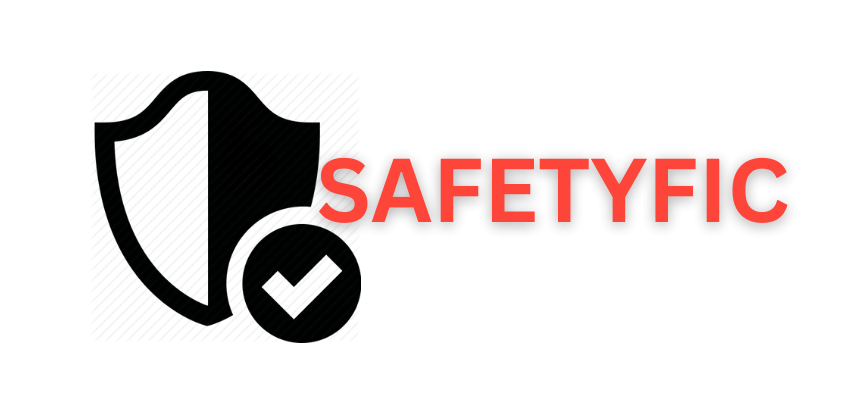Are you looking to recover your keychain password? This guide will walk you through the step-by-step process of recovering it on a Mac computer.
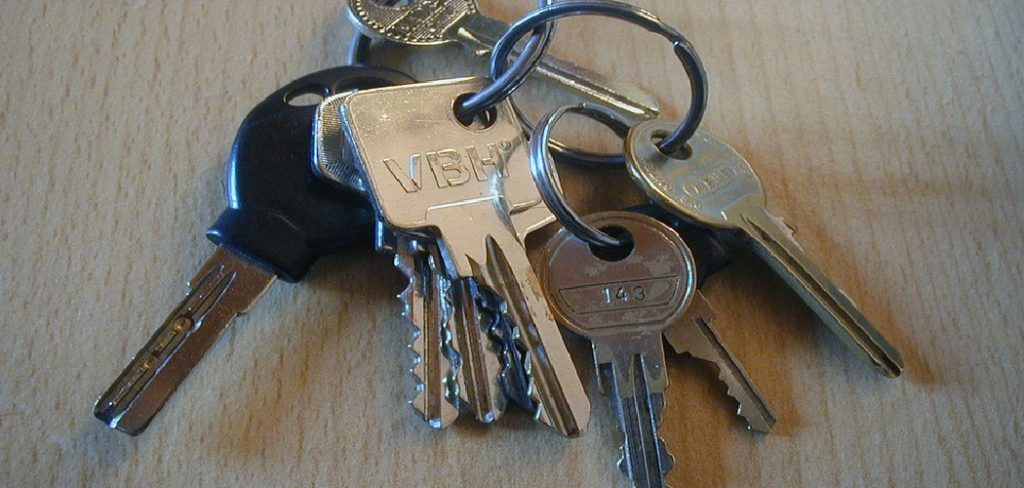
Forgetting your keychain password can be a frustrating experience, especially when it serves as a central hub for managing your saved credentials and sensitive information on your device. Thankfully, there are straightforward steps you can take to recover or reset your keychain password, ensuring uninterrupted access to your accounts and data. Additionally, we will also provide some tips on how to prevent this situation from happening again in the future.
This guide on how to recover keychain password will provide clear and actionable instructions to help you regain control of your keychain and maintain the security of your information.
What Are the Benefits of a Keychain?
- Secure Password Storage
- Easy Access to Apps and Websites
- Simplified Login Process
The benefits of using a keychain on your Mac or iOS device are numerous, making it an essential tool for managing your passwords and sensitive information. With a keychain, you can securely store all your login credentials in one place, eliminating the need to remember multiple usernames and passwords.
What Will You Need?
- A Mac or iOS Device
- Internet Connection
- Apple ID
To use the keychain feature, you will need a Mac or iOS device with an internet connection and an Apple ID. The keychain is built into the device’s operating system, so there is no additional software to download.
10 Easy Steps on How to Recover Keychain Password
1. Open the Keychain Access App
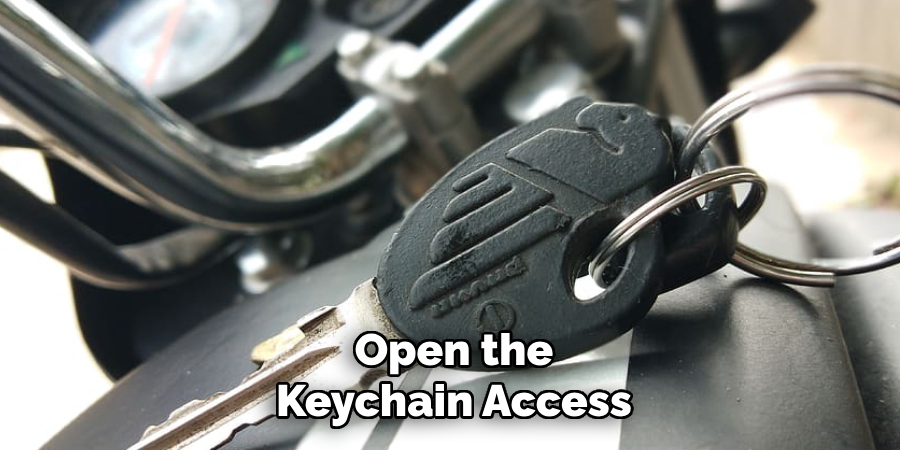
To begin, locate and open the Keychain Access app on your Mac. You can find it by navigating the Applications folder, selecting Utilities, and clicking on Keychain Access. Alternatively, you can use Spotlight Search by pressing Command (⌘) + Spacebar, typing “Keychain Access,” and selecting it from the search results. This app is where all your saved passwords and secure information are managed.
2. Select the Desired Keychain
Once the Keychain Access app is open, you will see a list of keychains on the left-hand sidebar. By default, the main keychains are Login, iCloud, System, and System Roots. Click on the keychain containing the specific password or secure information you seek. For most personal passwords, the Login keychain is the one to select.
3. Search for the Account or Service
Use the search bar in the upper-right corner of the Keychain Access window to locate the account or service you need. Enter keywords such as the website’s name, application, or account associated with the password or information you are retrieving. The results will populate in the main panel of the window, displaying relevant entries that match your search criteria. Each entry typically includes details such as the account name, kind of item (e.g., password, application password, certificate), and the date it was last modified. Carefully review the search results to identify the exact entry you want to access.
4. Double-Click on the Entry
Once you have located the desired entry in the search results, double-click on it to open a detailed view. This will bring up a window displaying more comprehensive information about the selected item, such as the username, password, or additional metadata, depending on the type of entry.

If the entry is password-protected, you may be prompted to enter your device’s administrator password to reveal the password or sensitive details. Ensure you carefully verify the information before making any changes or copying it.
5. Show the Password
To reveal the password, locate the “Show Password” checkbox, which is usually found within the detailed view window. Click the checkbox, and the password will appear in the corresponding field. Be aware that you may need to authenticate by entering your device’s administrator password before displaying the information. Always handle the revealed password with care to maintain security and privacy. If no password appears, double-check that the entry contains valid data and try again.
6. Enter Your Admin Credentials
To view the saved password, you may be prompted to enter your admin credentials. This step ensures that only authorized users can access sensitive information. When the authentication dialog box appears, input the username and password associated with your administrator account. After successfully entering the credentials, the saved password should become visible in the designated field. If you encounter any issues, double-check the credentials and ensure you have the necessary permissions on the device.
7. View the Recovered Password
Once you have successfully authenticated, the recovered password will be displayed in the password field or the designated area of the interface. Take note of the password and, if necessary, store it securely in a password manager for future reference.
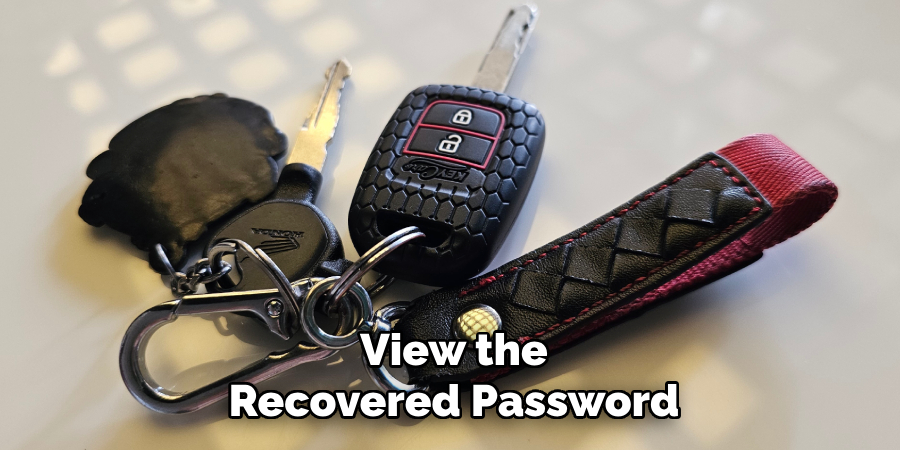
Ensure to double-check the recovered password for accuracy before proceeding. If the password does not appear, verify the previous steps to ensure no errors occurred during the recovery process. Always handle recovered passwords with caution to maintain system security.
8. Export a Backup (Optional)
Creating a data backup is an important step to ensure security and data retention. If exporting a backup is necessary, locate the backup options within your system’s settings or application interface. Choose a secure location for storing the backup, such as an external drive or a trusted cloud service, and ensure the file is encrypted if the data is sensitive. Follow the prompts to complete the backup process, and verify the integrity of the exported file once the process is finished. Regularly updating backups can safeguard your information against potential data loss.
9. Use iCloud Keychain Recovery
To recover your iCloud Keychain, ensure you have access to a trusted device that is signed in with your Apple ID. Navigate to the device’s settings and select your Apple ID, then choose “iCloud” and locate “Keychain.” If Keychain is disabled, enable it and follow the on-screen instructions to complete the setup. If prompted, use your iCloud Security Code or recover your account through account recovery methods. Confirm the recovery by entering the verification code sent to your trusted devices. This process will reinstate your saved passwords and account details, allowing you to regain full access to your iCloud Keychain data.
10. Update and Secure Passwords
Keeping your passwords updated and secure is essential for protecting your online accounts. Start by reviewing all your existing passwords and identifying any that are weak, reused, or outdated. Replace these with strong, unique passwords that combine a mix of uppercase and lowercase letters, numbers, and special characters. Consider using a password manager to generate and securely store these passwords. Additionally, enable two-factor authentication (2FA) on all accounts that support it for an extra layer of security. Regularly updating your passwords and staying vigilant against phishing attempts can significantly reduce the risk of unauthorized access to your accounts.
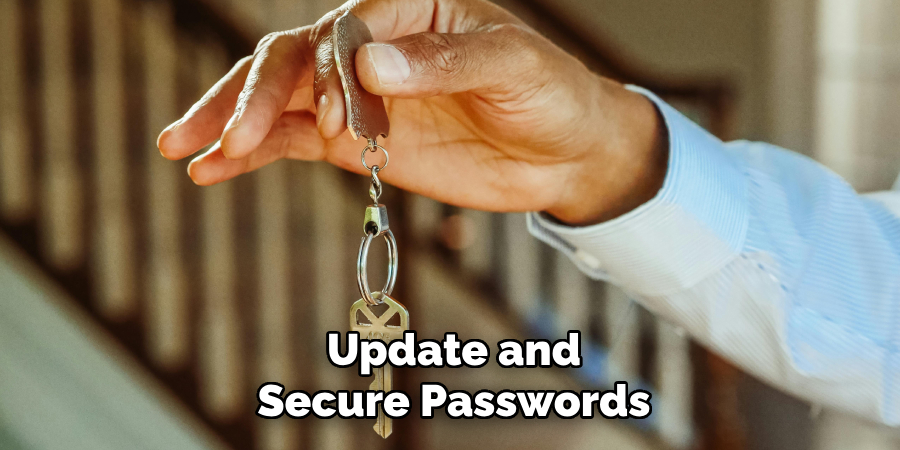
By following these best practices, you can proactively protect your personal information and online identity.
5 Things You Should Avoid
- Sharing Personal Information Online
Never share private or sensitive information, such as your Apple ID credentials, on forums or questionable websites claiming to help with keychain recovery. This increases the risk of identity theft and unauthorized access to your accounts.
- Using Third-Party Software from Untrusted Sources
Avoid downloading or using unknown third-party tools to recover your keychain password. These software programs may contain malware or compromise your system’s security.
- Ignoring Device Security Settings
Do not bypass or disable critical security settings on your device, as this can expose your data and make it more vulnerable to breaches during recovery.
- Attempting Random Password Combinations
Refrain from repeatedly trying random passwords or forcefully guessing your keychain password. If the system detects suspicious activity, this might lead to lockouts or permanent data loss.
- Skipping Backup Prior to Recovery Attempts
Never attempt to troubleshoot or recover your keychain password without backing up your data. This ensures that you can restore critical information if something goes wrong during the process.
What Type of Data Should Be Backed Up?
It is important to back up any data you do not want to lose, such as personal files, documents, photos, and important settings. This includes your keychain password and any other sensitive information stored on your device.
- Ignoring Password Recovery Options: Many devices offer various options for recovering a forgotten keychain password, such as using security questions or resetting through an email link. It is important to utilize these options before attempting more drastic recovery measures.
- Not Updating Keychain Software: Keychain software updates often include security enhancements that can help protect your sensitive information. Make sure to keep your keychain software up-to-date to ensure maximum security.
- Sharing Keychain Passwords: It is important to never share your keychain password with anyone, even trusted individuals. Doing so can compromise the security of your sensitive information and facilitate unauthorized access.
- Not Using Two-Factor Authentication: Two-factor authentication adds an extra layer of security by requiring a secondary code or device in addition to your password. Many devices offer this option for accessing the keychain, so be sure to enable it for added protection.
- Using Weak Passwords: The strength of your keychain password is crucial in protecting your sensitive information.
Conclusion
How to recover keychain password can be a straightforward process if you follow the right steps.
Start by ensuring you have access to your Apple ID credentials, which are often essential for resetting or recovering your keychain. If you cannot recall your keychain password, consider using the “Forgot Password” option or resetting it using your macOS system preferences. Additionally, make sure to update security settings, such as enabling two-factor authentication, to prevent future issues. Remember to create a strong and unique password for your keychain to maintain the privacy of your sensitive information.
By following these steps, you can regain access to your keychain securely and efficiently.
About
Safety Fic is a distinguished figure in the world of Diy design, with a decade of expertise creating innovative and sustainable Diy solutions. His professional focus lies in merging traditional craftsmanship with modern manufacturing techniques, fostering designs that are both practical and environmentally conscious. As the author of diy, Safety Fic delves into the art and science of Safety Fic-making, inspiring artisans and industry professionals alike.
Education RMIT University
(Melbourne, Australia) Associate Degree in Design (Safety Fic) Focus on sustainable design, industry-driven projects, and practical craftsmanship. Gained hands-on experience with traditional and digital manufacturing tools, such as CAD and CNC software.
Nottingham Trent University
(United Kingdom) Bachelor’s in diyfastly.com and Product Design (Honors) Specialized in product design with a focus on blending creativity with production techniques. Participated in industry projects, working with companies like John Lewis and Vitsoe to gain real-world insights.
Publications and Impact
In diy, Safety Fic his insights on indoor design processes, materials, and strategies for efficient production. His writing bridges the gap between artisan knowledge and modern industry needs, making it a must-read for both budding designers and seasoned professionals.
